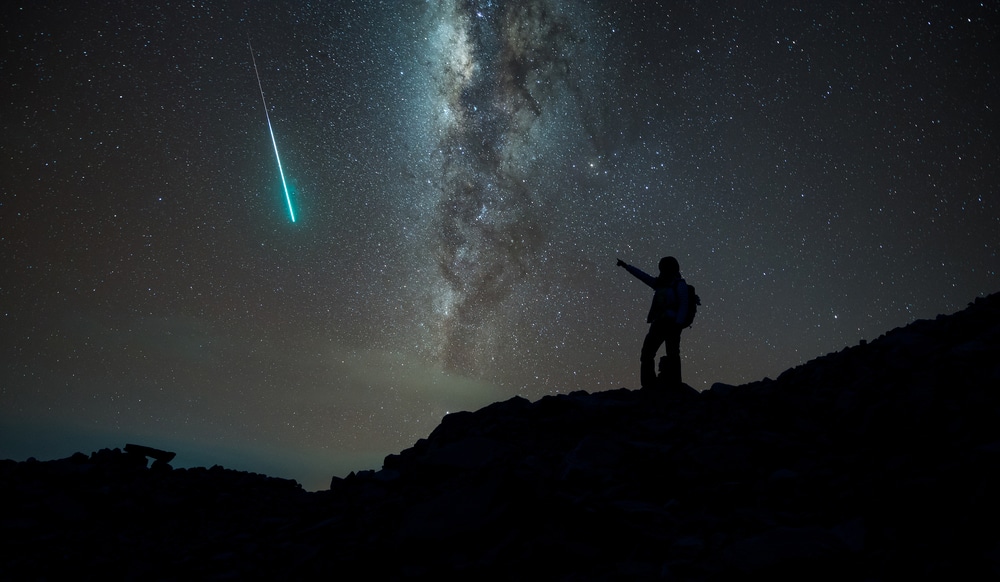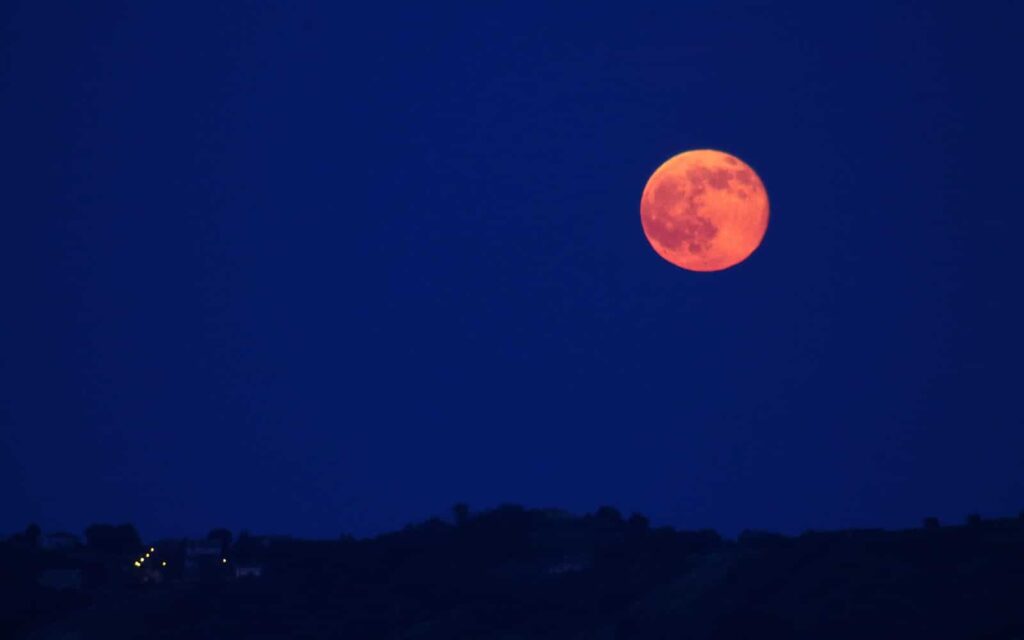This week the Perseid meteor shower will peak, and there’s a good chance you’ll be able to catch at least a few shooting stars. Why? Because the night sky might produce 150 to 200 meteors per hour! This is the best meteor shower of the year, and the best showing of the Perseids in two decades. So what is going on up there?
COMET SWIFT-TUTTLE’S LOSS IS YOUR GAIN
As they travel, comets leave behind trillions of dust- and sand-sized particles. When the Earth crosses into the debris trail of a comet, those particles slam into the atmosphere at tens of thousands of miles per hour, producing the “shooting star” effect as they burn up.
Comet Swift-Tuttle is the source of the Perseid shower, so named for the constellation from which it seems to originate. The comet orbits the Sun every 133 years, and what you see when you’re looking at this meteor shower are particles left behind centuries ago. Ordinarily, the Earth passes through the periphery of the field of debris. This time, thanks to orbital dynamics, we’ll be passing much closer to the heart of things. Jupiter’s gravity has tightened the trail of particles into a particularly dense debris field. That makes this an “outburst” year, doubling the number of possible meteors per hour. If ever you’ve wanted to try your hand at astrophotography, this is your big chance.
HOW TO CATCH THE SHOW
You don’t need much to catch a meteor shower. (A blanket, primarily. Maybe a chair.) The real issue is what you must avoid in order to see the show. And that is light pollution. It is the enemy of the night sky. It is produced by ambient lighting and such things as poorly oriented lampposts, which sometimes point out and up in addition to down, where the light is actually needed.
For the best show possible, you’re probably going to want to get out of town if you live in a highly populated area. The simple act of driving to the countryside can triple the number of visible meteors. If the evening sky is clear and your surroundings are dark, all you need to do is look up and wait. (That’s where the blanket comes in handy.) It takes about 45 minutes for your eyes to adjust to the darkness. The best night to see the Perseids will be after midnight and before dawn on the morning of August 12, when the Earth passes through the densest part of the debris field.
If it’s rainy where you are, don’t fret. You can already see some of the Perseids at night now, and you’ll still be able to catch meteors after the shower’s peak, through August 26. If the weather is really working against you, NASA’s Marshall Space Flight Center, home to the Meteoroid Environments Office, will be livestreaming the event at 10:00 p.m. EDT on August 11 and 12.
source: mentalfloss
The script of the video:
The Perseid meteor shower will burst into light this August as Earth passes through the long trail left by Comet Swift-Tuttle — and this year, it’s slated to put on a spectacular show.
According to NASA meteor expert Bill Cooke, the Perseids are perhaps the most popular meteor shower of the year. They will be in “outburst” in 2016, which means they’ll appear at double the usual rates.
“This year, instead of seeing about 80 Perseids per hour, the rate could top 150 and even approach 200 meteors per hour,” Cooke said. It’s the first such outburst since 2009.
This year should be better than average because of Jupiter’s alignment with both the Earth and the Perseid stream. Before intersecting Earth next month, the tiny Perseid particles will have passed close enough to the biggest planet in our solar system to be shifted closer to the Earth’s orbit.
While a single observer might see as many as 60 to 90 meteors per hour during a normal Perseid shower, thanks to this gravitational boost from Jupiter, the meteor rate this year might be noticeably higher.
When Earth passes through the debris, specks of comet stuff hit the atmosphere at 140,000 mph and disintegrate in flashes of light.
Swift-Tuttle’s debris zone is so wide that Earth spends weeks inside it.
Indeed, it is not unusual for skywatchers to see a few Perseids streaking across the midnight sky as early as July.
Comet Swift-Tuttle is the largest object known to repeatedly pass by Earth; its nucleus is about 16 miles (26 kilometers) wide.
It last passed nearby Earth during its orbit around the sun in 1992, and the next time will be in 2126. But it won’t be forgotten in the meantime, because Earth passes through the dust and debris it leaves behind every year, creating the annual Perseid meteor shower.
Rates are highest, however, in August when Earth passes through the heart of the debris zone.
Meteors from comet Swift-Tuttle are called Perseids because they seem to fly out of the constellation Perseus.
This arrangement of stars, which represents an ancient hero from Greek mythology, rises in the Northeast around 10 pm local time.
As Perseus rises and the night deepens, meteor rates will increase.
The best time to look starts around midnight.
Meteors will be seen until dawn brightens the sky on Saturday morning, August 13th, when Perseus is near its highest point in the sky.
For best results get away from city lights.
The darkness of the countryside multiplies the visible meteor rate 3 to 10 fold compared to city views.
Vocabulary
to peak | tetőzni |
there's a good chance | jó esély van rá |
shooting star | hullócsillag |
decade | évtized |
comet | üstökös |
loss | veszteség |
gain | nyereség |
dust- and sand-sized | porszem- és homokszem méretű |
particle | részecske |
debris | törmelék |
to orbit | keringeni |
periphery | periféria, perem, külső rész |
dense | sűrű |
to try your hand at | megpróbálni, kipróbálni valamit |
blanket | takaró |
to avoid | elkerülni |
light pollution | fényszennyezés |
enemy | ellenség |
ambient | környező |
poorly oriented | rosszul elhelyezett |
to triple | megháromszorozni |
comes in handy | jól jön |
to adjust to | alkalmazkodni |
to fret | bosszankodni, idegeskedni |
alignment | együttállás |
noticeably | észrevehetően |
speck | darabka, szemcse |
to disintegrate | szétjönni, szétválni |
nucleus | mag |
hero | hős |






